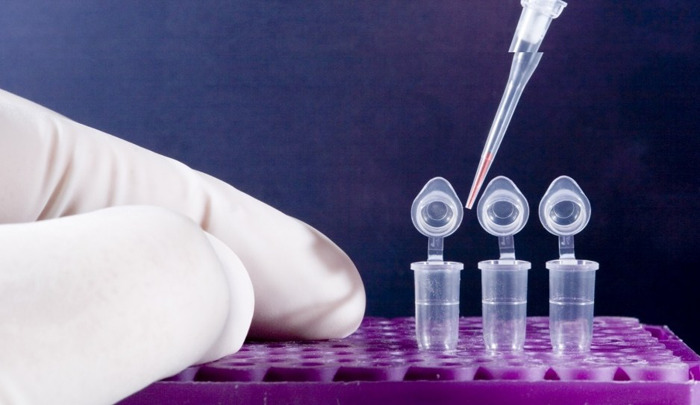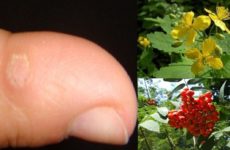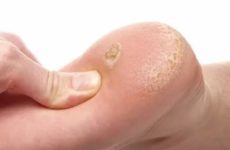Anogenital warts cause a lot of discomfort, and their owners begin to withdraw into themselves and feel inferior.
To date, there are a lot of tools and therapeutic techniques that allow you to achieve long-term remission of this pathology.

Содержание:
What are venereal warts, papillomas?
Anogenital warts are skin neoplasms of a predominantly benign nature, which are localized in the perianal region, as well as on the external and internal genital organs.
Their formation provokes the human papillomavirus, which can be infected during sexual contact or through close bodily contact.
Once in the body, the papillomavirus can remain latent for a long time, and begins to activate only when a person’s immune defenses deteriorate. The carrier may be unaware of their infection and continue to infect their sexual partners.
It is very important to understand that the discovery of anogenital warts in your sexual partner is not proof of his infidelity, since infection with the virus could have occurred many years ago, and it has only become more active now.
Stages of the disease
The severity of anogenital papillomatosis depends on the clinical manifestations of the disease:
- Mild degree – there are less than 10 elements on the mucous membranes and skin, the patient does not experience discomfort and there are no pronounced symptoms.
- Medium degree – up to 50 elements are present, there is discomfort, weakness, signs of inflammation.
- Severe degree – more than 50 elements on the skin and mucous membranes, which merge with each other and oblige large conglomerates. The patient cannot lead a sexual life, experiences difficulties in everyday life, feels severe pain.
The last stage of papillomatosis may require inpatient treatment, since after removal of the growths, the area of damage will be large enough, and the patient’s recovery will be long.

Varieties
The clinical classification of anogenital warts differs in morphology and shape. This will be described in more detail below.
By morphology
Warts can be:
- Pointed – finger-shaped protrusions of the mucous membrane and skin, which have a typical loop-like or variegated pattern.
- Papules – pigmented rashes without protrusions.
- Spots – look on the mucosa as areas with a low color.
By shape
Warts can be of the following types:
- Bowen’s disease and bowenoid papillomatosis.
- Giant condyloma Bushke-Levenshtein.
Causes
As mentioned above, the cause of anogenital warts is HPV. Currently, there are about two dozen of its strains, which can provoke the growth of such neoplasms in the anus and genitals.
As a rule, genital warts are diagnosed, but sometimes intraepithelial neoplasias are observed, which occur when the body is damaged by type 16 papillomavirus. In this case, the risk of developing cancer increases.

Symptoms of the disease
Most often, anogenital papillomatosis has an asymptomatic course, and patients consult a doctor when they visually detect manifestations of warts.
But if the locations of the warts are subjected to friction and are injured (sexual intercourse or defecation), unpleasant clinical signs may occur:
- painful sensations;
- bloody issues;
- feeling of discomfort;
- burning and itching.
Diagnostics
Diagnosis of anogenital warts is a whole range of activities. It all starts with an examination and questioning of the patient.
Complaints and anamnesis
The specialist listens to the patient’s complaints and finds out possible ways of infection. Asks about lifestyle, having one or more sexual partners, and so on.
Physical examination
The patient is examined, during which the doctor determines the type of warts. To improve the visualization of growths, a test with a 5% solution of acetic acid is carried out.
When the lesions are treated with this solution, they retain a whitish color for some time, and the vascular pattern also increases.
Laboratory diagnostics
Laboratory tests are recommended for:
- confirmation of the diagnosis;
- identification of the papilloma virus strain;
- determining the degree of viral load;
- predicting the course of the disease.

Appointed:
- PCR;
- ELISA;
- definition of AT and AG to HPV.
To exclude oncological pathology, a morphological and cytological examination is prescribed.
Serological testing for syphilis, hepatitis, and HIV is recommended for the safe removal of warts by surgical excision and physical destruction.
Instrumental diagnostics
It is carried out if the specialist suspects an atypical location of warts:
- Meatoscopy – detection of growths in the navicular fossa in men.
- Urethroscopy – detection of warts in the urethra.
- Anoscopy – detection of warts in the anal area.
- Colposcopy – detection of atypical squamous cells, glandular epithelium, invasive cancer.
Other diagnostics
Recommended consultations:
- gynecologist;
- urologist;
- proctologist;
- surgeon-oncologist;
- immunologist.
How is this disease treated?
To date, it is completely impossible to rid a person of the papilloma virus, and all the methods used by doctors are based on reducing its activity and stopping clinical manifestations.
Treatment involves:
- physical or chemical destruction of growths;
- taking antiviral drugs;
- taking cytostatics;
- taking immunomodulators.

In most cases , Panavir is prescribed as an antiviral agent ; interferon and its inducers are prescribed to increase local and general immunity.
Cytostatics are recommended for genital warts, a good drug is Podophyllin, which is used topically.
As for the removal of growths, the following methods are most often used:
- classic scalpel removal;
- electrosurgical techniques;
- laser removal ;
- cryodestruction .
Chemical removal is based on the effect on growths of various aggressive substances – acids, alkalis and their combinations. The following substances are used:
Folk methods
Folk remedies for anogenital warts can only be used with the permission of a doctor, most often experts do not object to these remedies, but it is believed that alternative treatment can only be used as an additional therapy.
Benign neoplasms lubricate:
- celandine juice;
- juice of sour apples;
- castor oil;
- a mixture of olive and tea tree oils.

Decoctions, infusions and tinctures of medicinal plants are also used, which enhance immune defenses. In most cases, a tincture of Echinacea purpurea or Eleutherococcus is recommended.
Possible Complications
Without treatment, anogenital warts can cause the following complications:
- violation of the patency of the urethra and anus;
- papillomavirus type 16 can cause cancer;
- if the growth is damaged, secondary infection is possible;
- a person during the manifestations of neoplasms becomes especially contagious to others.
During pregnancy, anogenital warts can lead to the fact that the child may be infected during childbirth, it is especially dangerous when the growths in a pregnant woman are caused by oncogenic strains.
As for the effect of papillomavirus on the cervix, the likelihood of developing cervical cancer, although small, is still there.
At risk, women who are promiscuous, abuse alcohol, smoke, this is due to the fact that addictions worsen immunity, and the development of the virus is faster.
Prevention
To prevent infection with the papillomavirus, which leads to the formation of warts in the anogenital area, it is recommended to adhere to the following rules:
- avoid casual sexual contact;
- use barrier contraceptives during sexual intercourse;
- observe the generally accepted rules of intimate hygiene;
- strengthen immunity;
- wear underwear made from natural materials.
Despite the fact that at the moment it is not possible to overcome the papilloma virus, it can be deactivated and a stable remission can be achieved. To do this, you need to visit a doctor.







